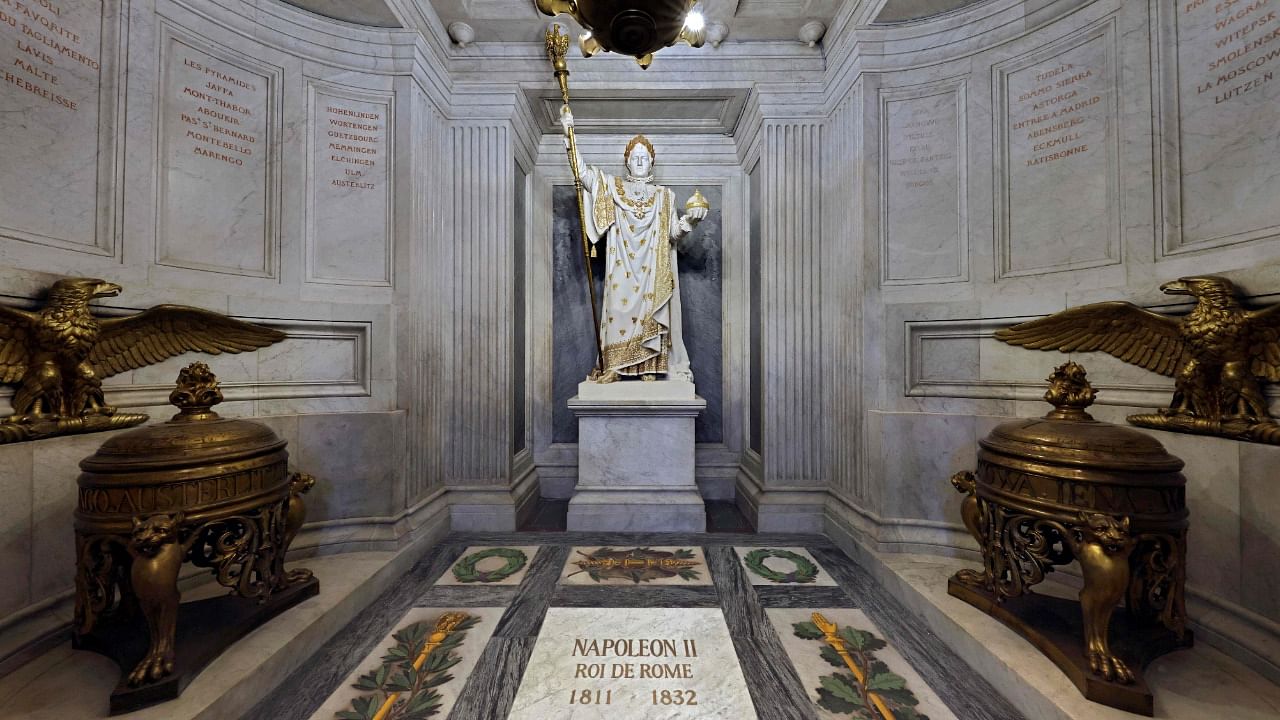
Napoleon Bonaparte found inspiration in ancient Rome to build his empire and left his own architectural mark on the Italian capital -- but was too busy with his military campaigns to ever actually visit.
On the 200th anniversary of his death, the Eternal City is paying tribute to the Frenchman with a number of exhibitions marking his fascination with the past glories of the Roman emperors.
"Since his training at Brienne military college, ancient history has been a source of inspiration for Napoleon," said Massimiliano Munzi, curator of the "Napoleon and the Myth of Rome" exhibition at the Trajan's Markets.
His conquest of most of continental Europe was modelled on the great emperors, he himself was often represented in painting and sculpture as a Roman leader, and he even named his son and heir the "king of Rome".
"His references were people from ancient Rome... the great emperors, but also the great strategists and military engineers of antiquity," Munzi told AFP.
His idols notably were Julius Caesar, Augustus, and the emperors Trajan, Diocletian, Constantine, Justinian, "whom he imitated but to whom he also felt himself the heir".
Despite this fascination, Napoleon never visited Rome himself, even if his troops occupied the city from 1809 to 1814.
"He didn't have the time to come to Rome, he was too occupied by his military campaigns and the construction of the French imperial state," noted Munzi.
"But he was expected in Rome, so much so that the Quirinal Palace (then home to the popes and now the Italian president) prepared rooms for his arrival," the curator said.
Napoleon viewed Rome as the second capital of his empire -- after Paris -- and how better to reaffirm this link than by restoring monuments of the Roman empire?
The first beneficiary was the celebrated Trajan's Column, a monument to the victory in the Dacian Wars by the Roman emperor Trajan, who reigned from 98 to 117 AD.
When the French troops first arrived, it was "stuck in a smelly ditch filled with rubbish", noted Nicoletta Bernacchio, another curator at the exhibition at Trajan's Markets.
Napoleon's forces set about clearing the area to the south of the monument to create a square, works which continued until 1814, when the French pulled out of Rome, and then continued when Pope Pius VII returned and completed it.
Napoleon was not content simply to restore Rome's rightful heritage but he also brought bits of it back to Paris, with many pillaged items ending up in the Louvre.
He even thought about moving Trajan's Column to Paris, but ended up with a rather easier solution -- a bronze copy.
"The column in Place Vendome (in Paris), which Napoleon erected after the victory at Austerlitz in 1805 and which was inaugurated in 1810, is nothing more than a copy of the Trajan one," Bernacchio said.
Unlike the Roman version, which lost the gilded bronze statue of the emperor that once stood on top, the column in Place Vendome still bears the statue of Napoleon as Caesar, complete with a toga, sword and laurel crown.